The Best College Football Traditions
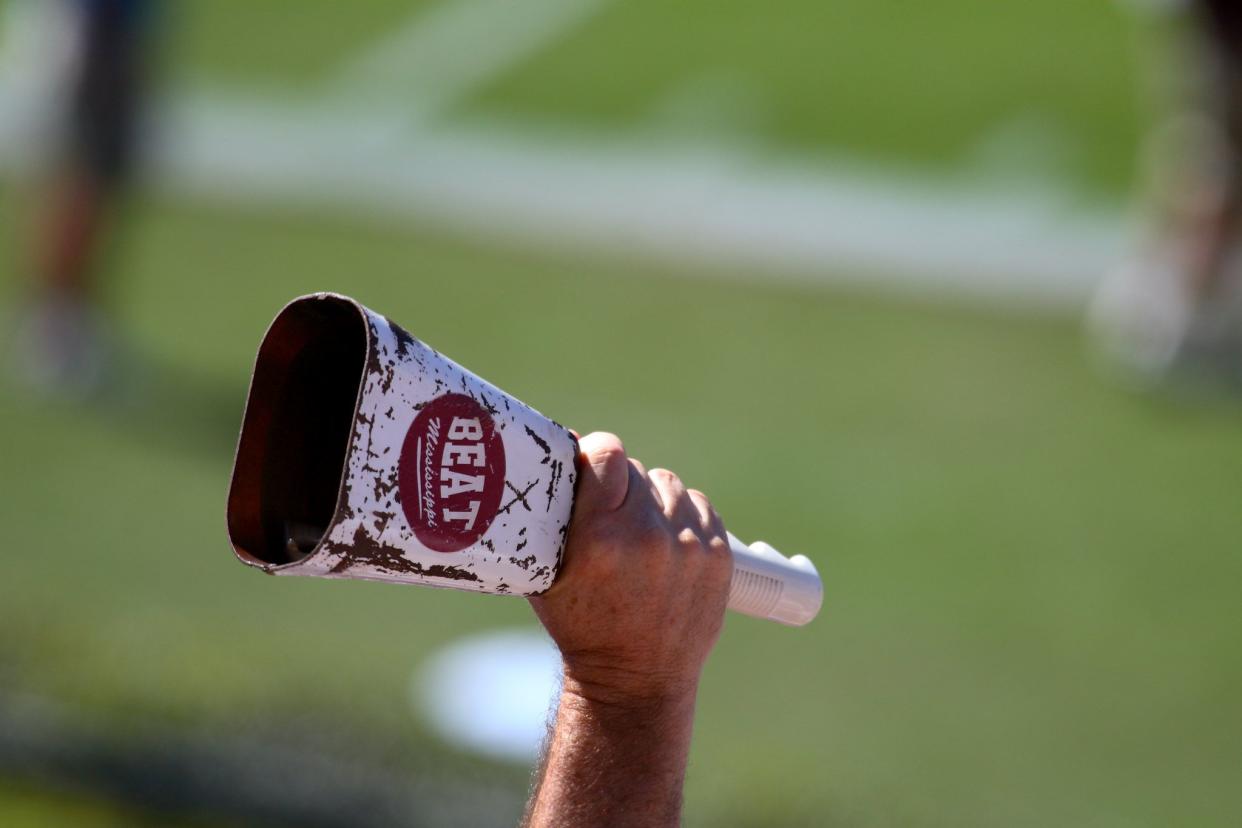
Fun and Games
Underneath the stadium lights with the cool and crisp air numbing your cheeks as the sounds of the marching band vibrate through the bleachers and into your chest, there’s nothing quite like a college football game. But some games push the envelope and embrace eccentric traditions that make the entire experience even more incredible. Check out some of the most interesting college football traditions here.
Related: The Greatest Football Movies of All Time

Fun and Games
Underneath the stadium lights with the cool and crisp air numbing your cheeks as the sounds of the marching band vibrate through the bleachers and into your chest, there’s nothing quite like a college football game. But some games push the envelope and embrace eccentric traditions that make the entire experience even more incredible. Check out some of the most interesting college football traditions here.
Related: The Greatest Football Movies of All Time
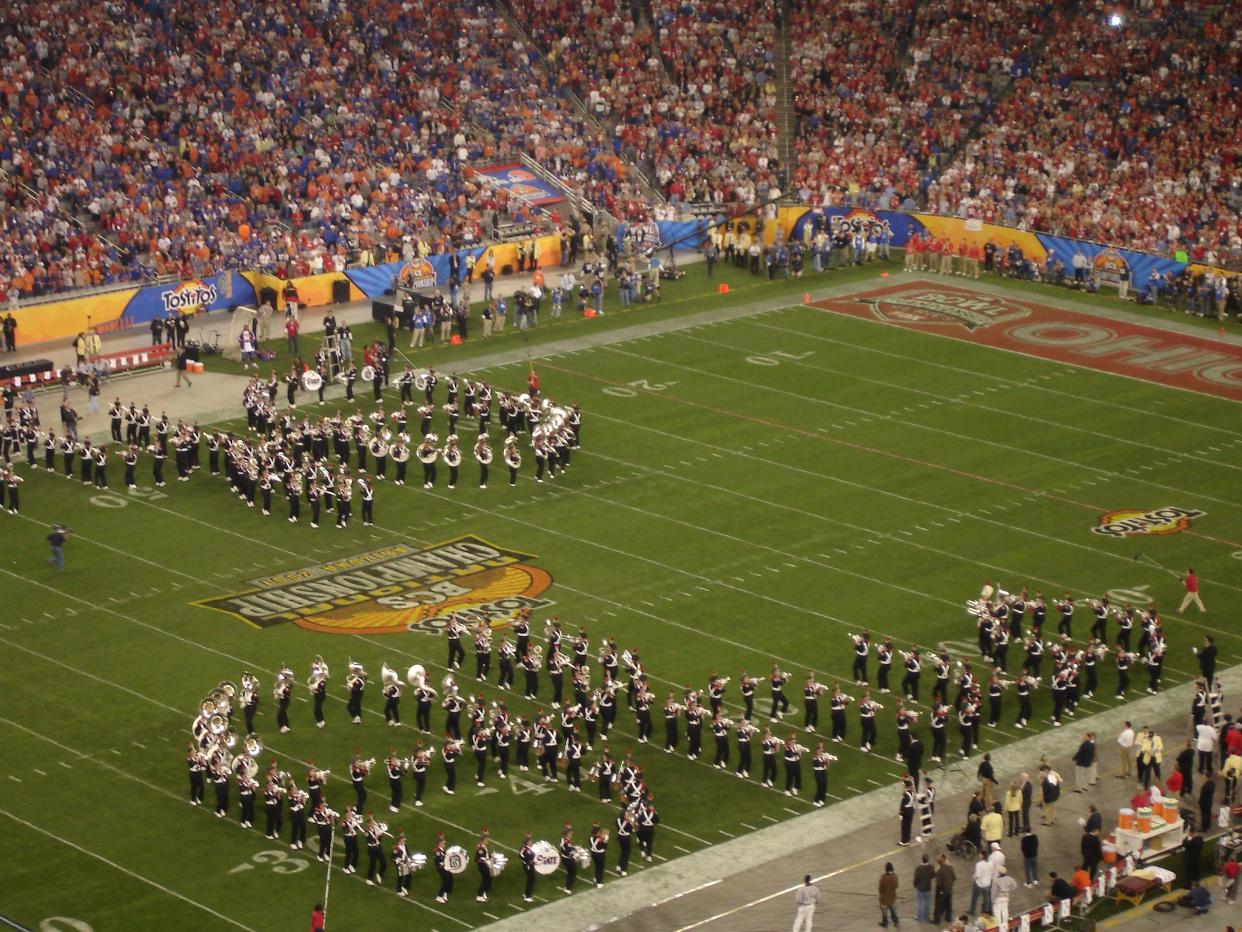
Script Ohio
First performed in 1936, “Script Ohio” has cemented itself as a permanent fixture with the marching band during Ohio State University’s home games. As the band’s signature formation, Script Ohio configures a series of formations, starting with the entire band forming a giant “O” and slowly transitioning to positions that spell out the word, “Ohio.” Every year, a lucky fourth- or fifth-year sousaphone player is chosen to be the dot of the “i” and near the end of the formation, the chosen dotter high-fives the drum major and then bows to both sides of the stadium. Interestingly, the iconic formation was first used by OSU’s rival (albeit not identically), The University of Michigan, in 1932.
Related: Biggest American Sports Scandals

Script Ohio
First performed in 1936, “Script Ohio” has cemented itself as a permanent fixture with the marching band during Ohio State University’s home games. As the band’s signature formation, Script Ohio configures a series of formations, starting with the entire band forming a giant “O” and slowly transitioning to positions that spell out the word, “Ohio.” Every year, a lucky fourth- or fifth-year sousaphone player is chosen to be the dot of the “i” and near the end of the formation, the chosen dotter high-fives the drum major and then bows to both sides of the stadium. Interestingly, the iconic formation was first used by OSU’s rival (albeit not identically), The University of Michigan, in 1932.
Related: Biggest American Sports Scandals
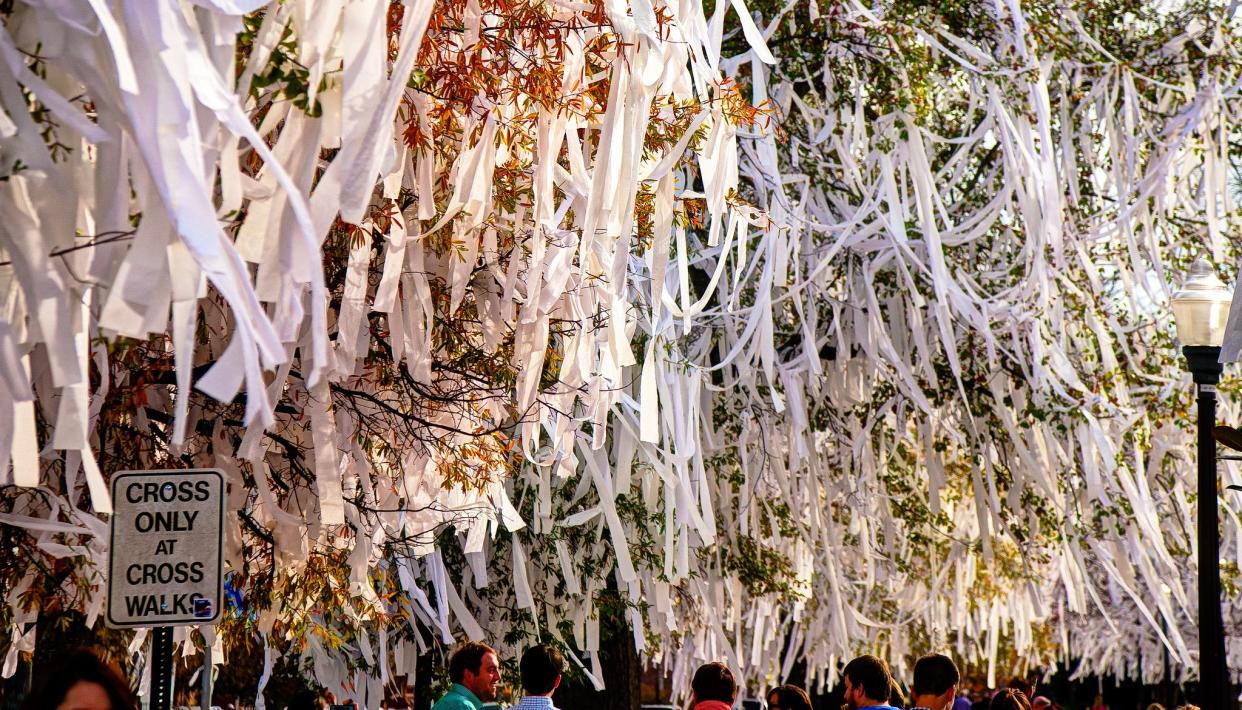
Toilet Paper at Toomer’s Corner
Throwing rolls of toilet paper into trees and onto homes is usually considered vandalism, but the act means something different at Auburn University. After a big win at Auburn, fans head to the corner where the city and the university campus meet, just outside of the drugstore Toomer’s Drugs, and throw rolls of toilet paper onto the oak trees. The longstanding tradition did come to a halt for a couple of years after someone poisoned the trees, but new ones have since been planted in their place.
For more fun trivia, please sign up for our free newsletters.

Toilet Paper at Toomer’s Corner
Throwing rolls of toilet paper into trees and onto homes is usually considered vandalism, but the act means something different at Auburn University. After a big win at Auburn, fans head to the corner where the city and the university campus meet, just outside of the drugstore Toomer’s Drugs, and throw rolls of toilet paper onto the oak trees. The longstanding tradition did come to a halt for a couple of years after someone poisoned the trees, but new ones have since been planted in their place.
For more fun trivia, please sign up for our free newsletters.
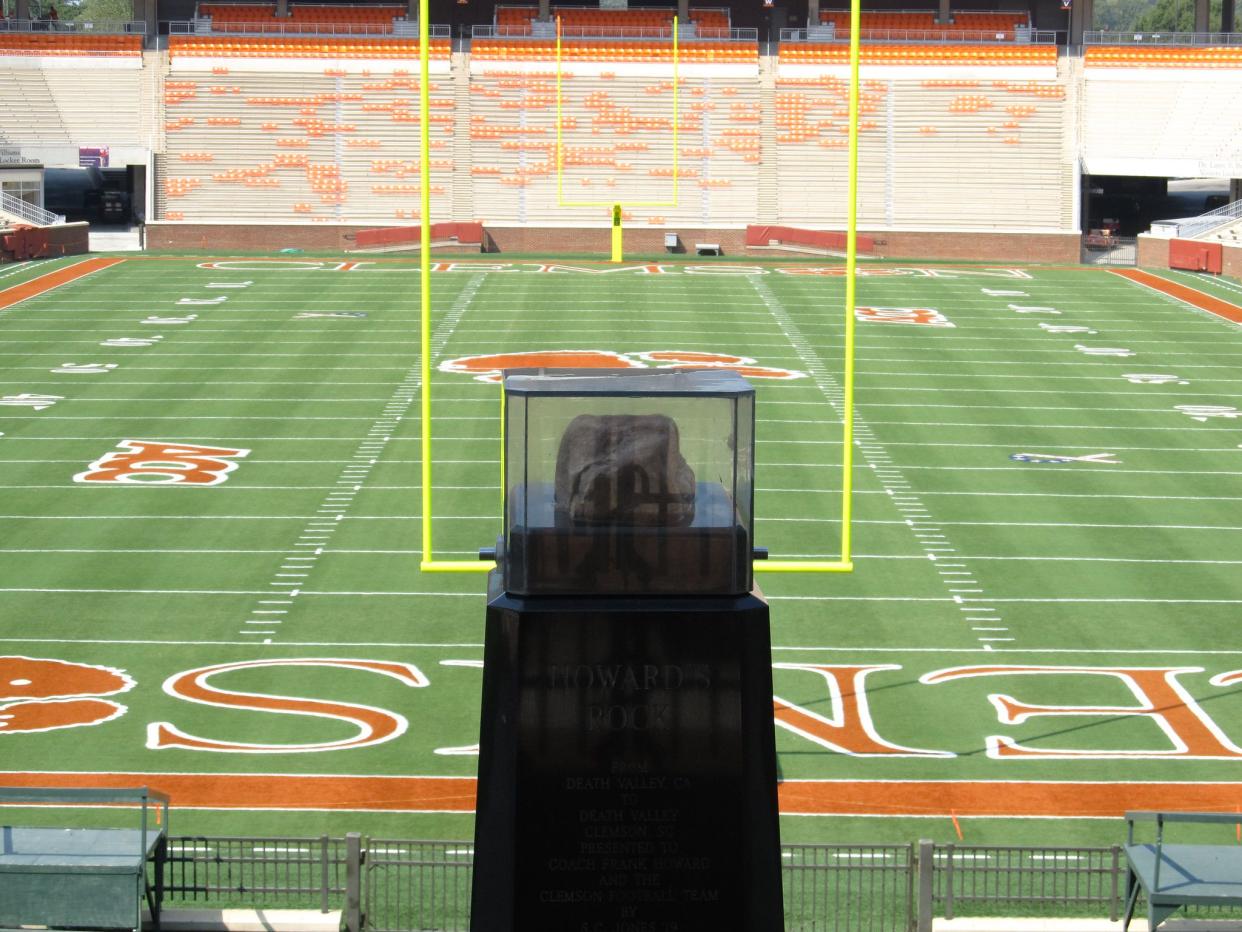
Howard’s Rock
With more than 25 conference championships under their belt, Clemson University’s football team is known for, well, winning a lot of games. But is it skill fueling their victories or the powers bestowed upon them by a magical rock? In 1966, longtime Clemson coach Frank Howard was given a rock from Death Valley, California, as a gift and he placed it on a pedestal at the top of “The Hill” — where the players enter the field for games. A year later, the coach told his players if they gave 110%, they could rub Howard’s Rock as a right of passage. The team won their game, and ever since, players have rubbed the rock for good luck before taking the field.

Howard’s Rock
With more than 25 conference championships under their belt, Clemson University’s football team is known for, well, winning a lot of games. But is it skill fueling their victories or the powers bestowed upon them by a magical rock? In 1966, longtime Clemson coach Frank Howard was given a rock from Death Valley, California, as a gift and he placed it on a pedestal at the top of “The Hill” — where the players enter the field for games. A year later, the coach told his players if they gave 110%, they could rub Howard’s Rock as a right of passage. The team won their game, and ever since, players have rubbed the rock for good luck before taking the field.
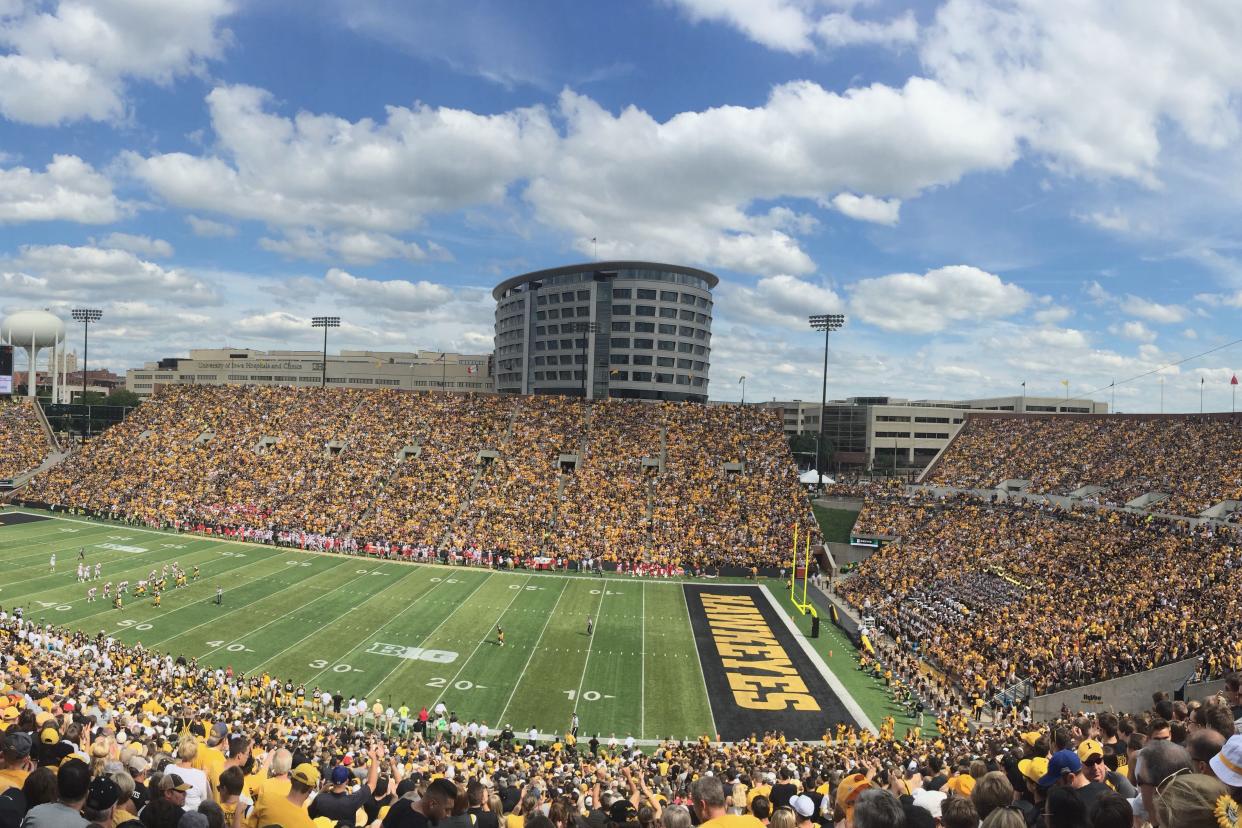
The Hawkeye Wave
This one is without a doubt the most heart-warming tradition on our list. The University of Iowa Stead Family Children’s Hospital overlooks the college’s football stadium, so at the end of the first quarter, fans turn their attention away from the field to the windows of the hospital, waving to all of the children and their families watching the game from inside. The 2022 season added on to the tradition, choosing a kid to be the kids’ captain for every home game and asking them to pick the song to be played during the Hawkeye wave.

The Hawkeye Wave
This one is without a doubt the most heart-warming tradition on our list. The University of Iowa Stead Family Children’s Hospital overlooks the college’s football stadium, so at the end of the first quarter, fans turn their attention away from the field to the windows of the hospital, waving to all of the children and their families watching the game from inside. The 2022 season added on to the tradition, choosing a kid to be the kids’ captain for every home game and asking them to pick the song to be played during the Hawkeye wave.
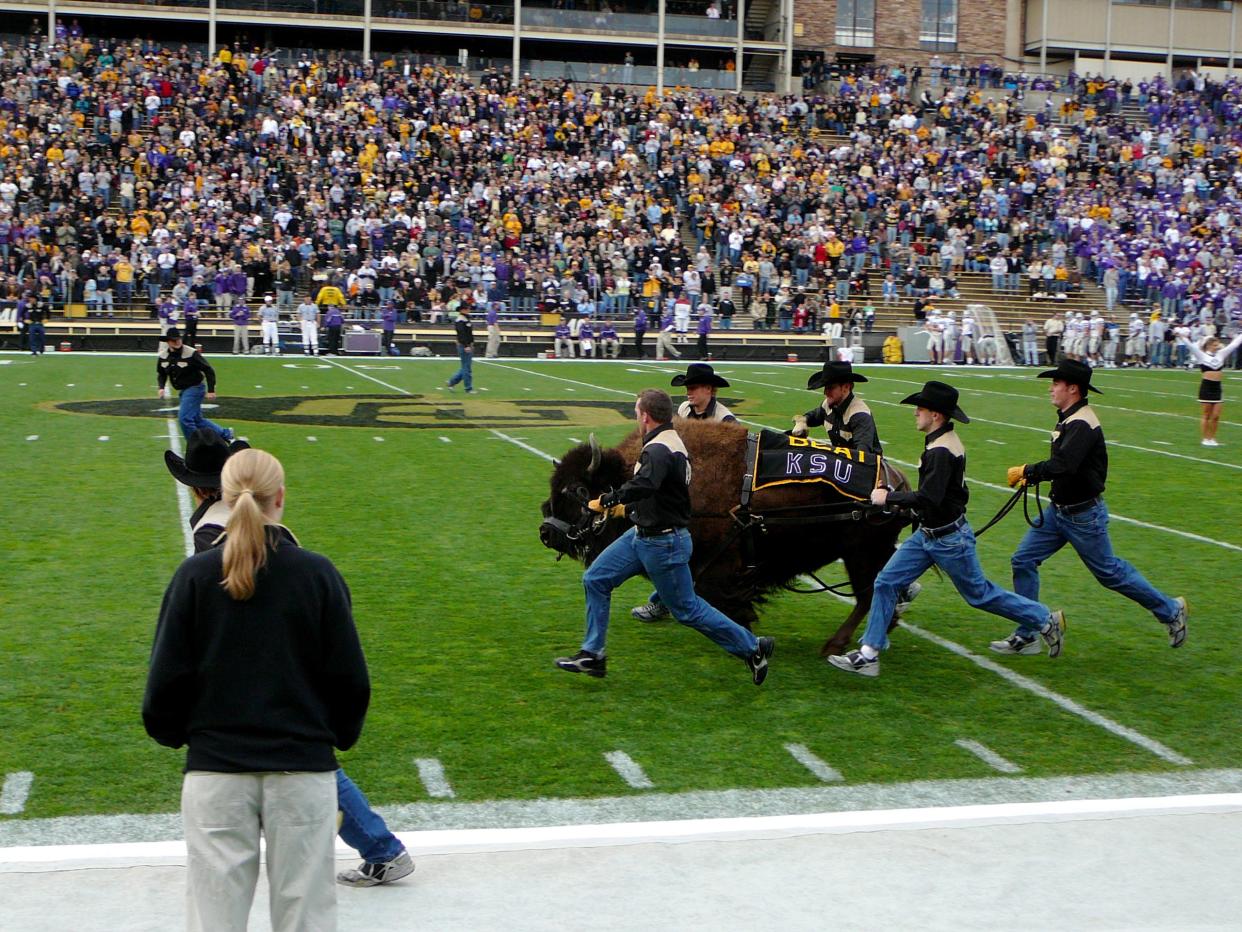
Ralphie’s Run
When it comes to mascots, it’s pretty hard to beat the University of Colorado Boulder’s live buffalo, Ralphie. Since 1967, the university has upheld one of the more unique college football traditions: At the start of each home game, the team’s live buffalo (accompanied by handlers) sprints onto the field in a horseshoe-shaped run. Since the tradition has gone on as long as it has, the team is now on its sixth Ralphie with no end in sight.

Ralphie’s Run
When it comes to mascots, it’s pretty hard to beat the University of Colorado Boulder’s live buffalo, Ralphie. Since 1967, the university has upheld one of the more unique college football traditions: At the start of each home game, the team’s live buffalo (accompanied by handlers) sprints onto the field in a horseshoe-shaped run. Since the tradition has gone on as long as it has, the team is now on its sixth Ralphie with no end in sight.
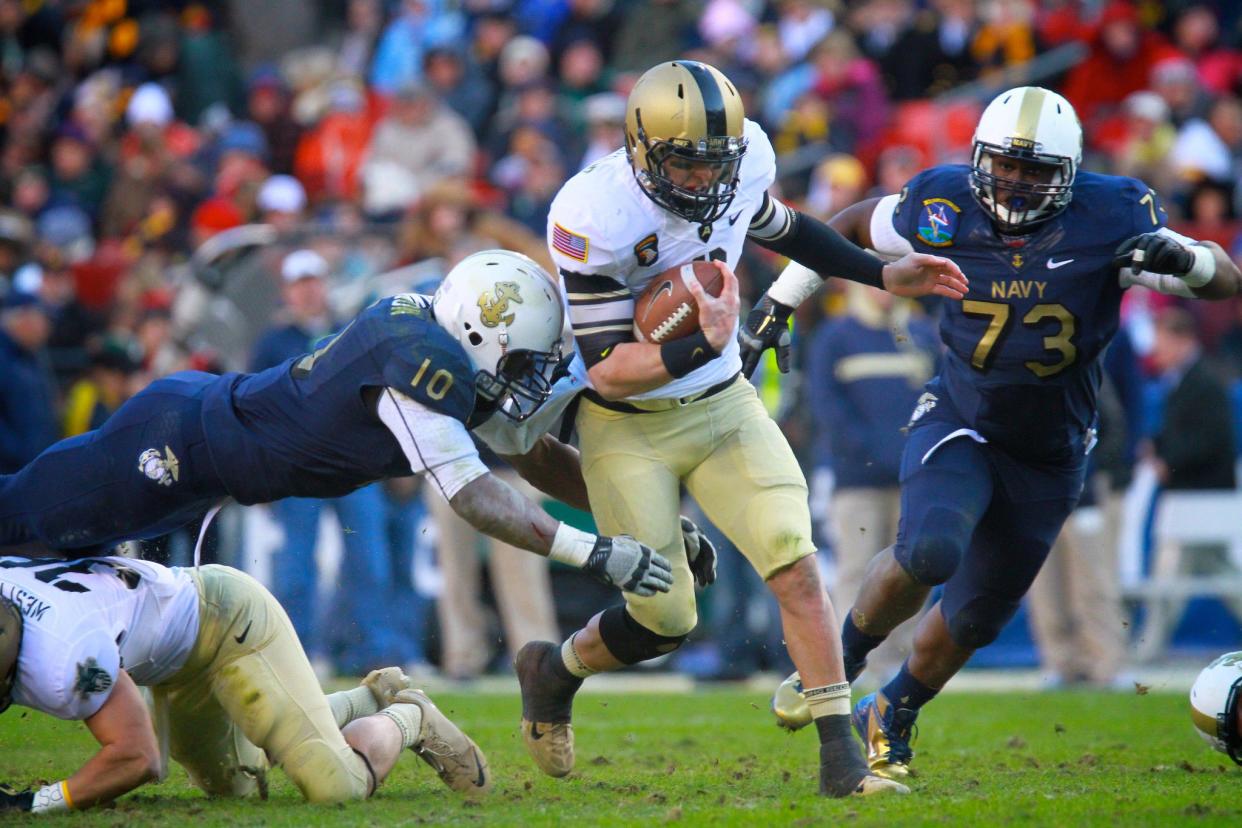
Army-Navy Game Traditions
The Army-Navy game is a college football game like no other, and as such, the event teems with tradition. To start things off, before the game the teams participate in a “prisoner exchange” — each year, seven West Point cadets are sent to Annapolis and vice versa during the semester-long Service Academy Exchange Program, and they are exchanged ahead of the big game so the students can cheer their respective teams on. The game also showcases a drumline battle between the two bands, military flyovers from both branches, and in the most goosebump-inducing moment, the march on. Before the kickoff, both the cadets of the U.S. Military Academy and the midshipmen of the U.S. Naval Academy — the entire student body, not just the players — march onto the field.

Army-Navy Game Traditions
The Army-Navy game is a college football game like no other, and as such, the event teems with tradition. To start things off, before the game the teams participate in a “prisoner exchange” — each year, seven West Point cadets are sent to Annapolis and vice versa during the semester-long Service Academy Exchange Program, and they are exchanged ahead of the big game so the students can cheer their respective teams on. The game also showcases a drumline battle between the two bands, military flyovers from both branches, and in the most goosebump-inducing moment, the march on. Before the kickoff, both the cadets of the U.S. Military Academy and the midshipmen of the U.S. Naval Academy — the entire student body, not just the players — march onto the field.
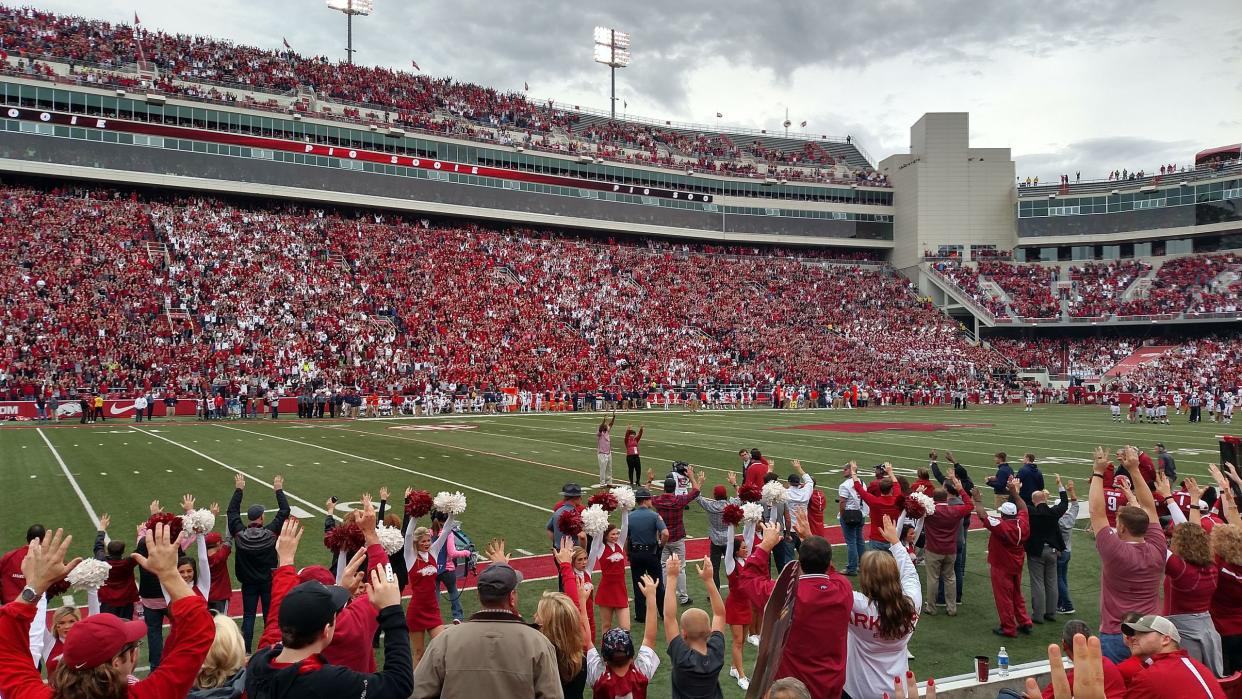
Calling the Hogs
Chants at college football games are pretty standard, but there’s an art form to “calling the hogs” at the University of Arkansas’ football games. As one of the most iconic chants, the instructions are found on the university’s website so you can make sure you don’t miss a “Woo” or a “Sooie!”

Calling the Hogs
Chants at college football games are pretty standard, but there’s an art form to “calling the hogs” at the University of Arkansas’ football games. As one of the most iconic chants, the instructions are found on the university’s website so you can make sure you don’t miss a “Woo” or a “Sooie!”
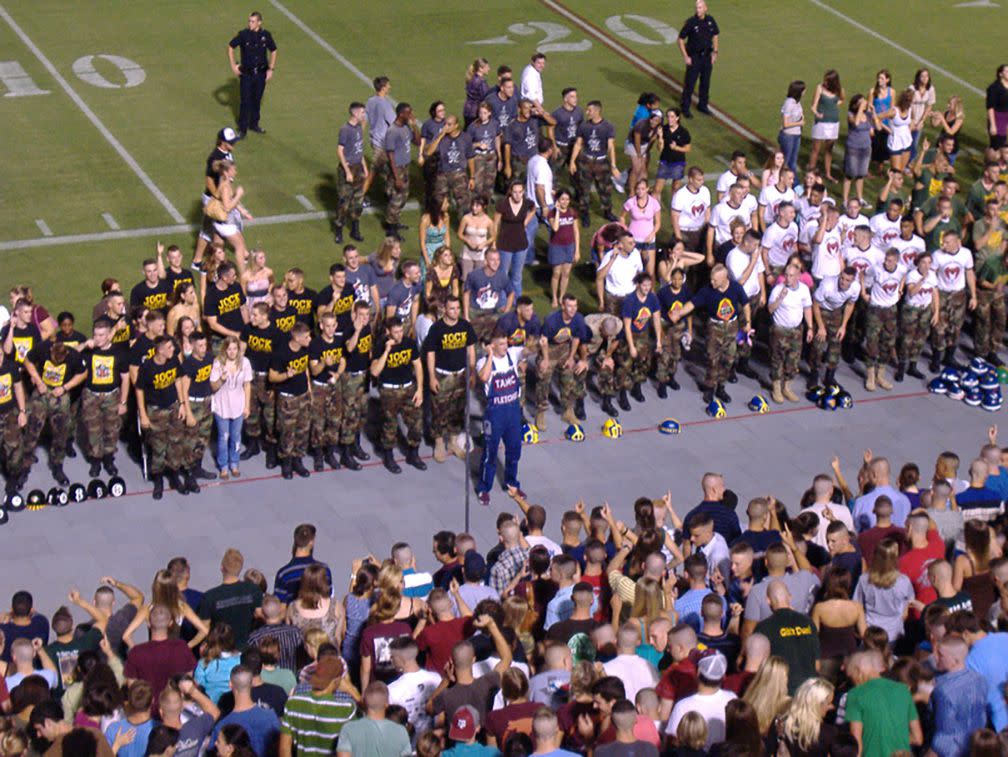
Midnight Yell
While most college football traditions happen during the game or just ahead of kickoff, Texas A&M’s midnight yell takes place on the eve before every home game. Dating back to 1913, the nighttime tradition started when a group of students responsible for leading a series of yells (essentially chants) during football games came up with the idea to gather all of the freshmen and meet on the YMCA building steps at midnight to practice their yells. Word about the gathering got out, and it turned into a much bigger happening than originally anticipated — and it’s only grown since then. Now, the midnight yell happens at the team’s stadium with upward of 25,000 participants including yell leaders and the band all making some noise to get hyped up for the impending game.

Midnight Yell
While most college football traditions happen during the game or just ahead of kickoff, Texas A&M’s midnight yell takes place on the eve before every home game. Dating back to 1913, the nighttime tradition started when a group of students responsible for leading a series of yells (essentially chants) during football games came up with the idea to gather all of the freshmen and meet on the YMCA building steps at midnight to practice their yells. Word about the gathering got out, and it turned into a much bigger happening than originally anticipated — and it’s only grown since then. Now, the midnight yell happens at the team’s stadium with upward of 25,000 participants including yell leaders and the band all making some noise to get hyped up for the impending game.
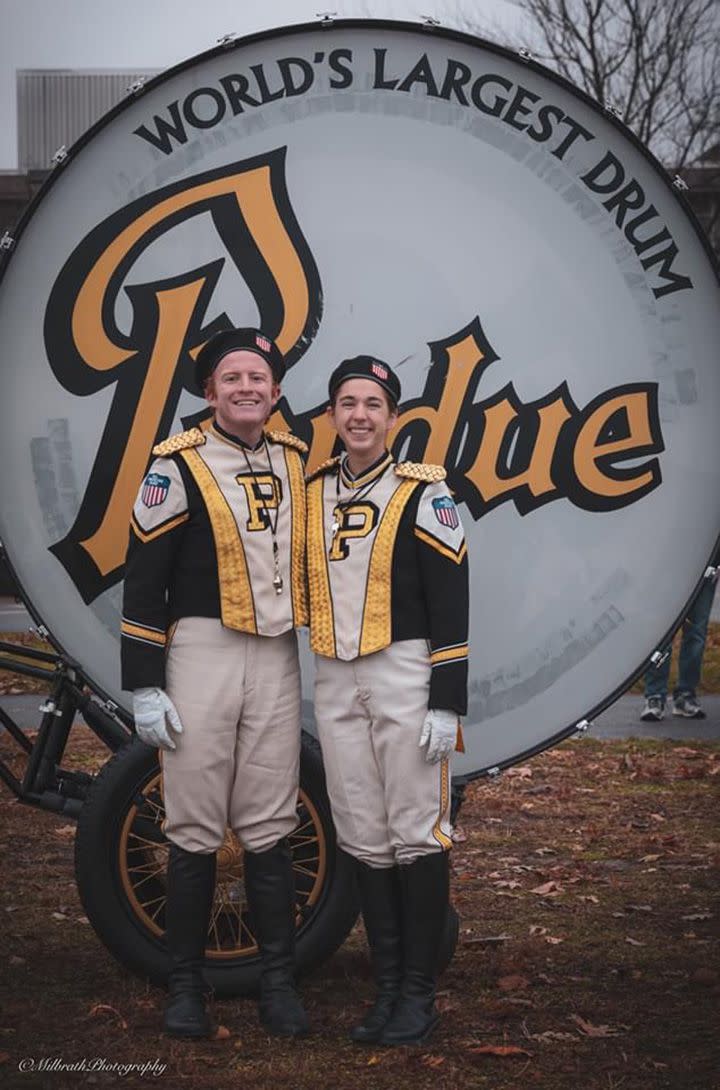
The World’s Largest Drum
In 1921, Purdue University’s band director Paul Spotts Emrick sought to create a drum bigger than any other band’s bass drum in the world, which was no easy feat being that drums at that time required animal hides, and the drum Emrick had in mind demanded one so big it wouldn’t be easy — or cheap — to secure. Eventually, the Leedy Corp. of Indianapolis — known then as the largest drum factory in the world — unveiled the drum. At 7 feet, 3 inches in diameter, it’s known as “the world’s largest drum” and is a permanent fixture at Purdue football games.

The World’s Largest Drum
In 1921, Purdue University’s band director Paul Spotts Emrick sought to create a drum bigger than any other band’s bass drum in the world, which was no easy feat being that drums at that time required animal hides, and the drum Emrick had in mind demanded one so big it wouldn’t be easy — or cheap — to secure. Eventually, the Leedy Corp. of Indianapolis — known then as the largest drum factory in the world — unveiled the drum. At 7 feet, 3 inches in diameter, it’s known as “the world’s largest drum” and is a permanent fixture at Purdue football games.

Mississippi State’s Cowbell
According to legend, during a mid-20th century football game at Mississippi State, a Jersey cow wandered onto the field, and a victory ensued. Superstitiously, fans began bringing cowbells to ring during home games for good luck, and the tradition stuck.

Mississippi State’s Cowbell
According to legend, during a mid-20th century football game at Mississippi State, a Jersey cow wandered onto the field, and a victory ensued. Superstitiously, fans began bringing cowbells to ring during home games for good luck, and the tradition stuck.
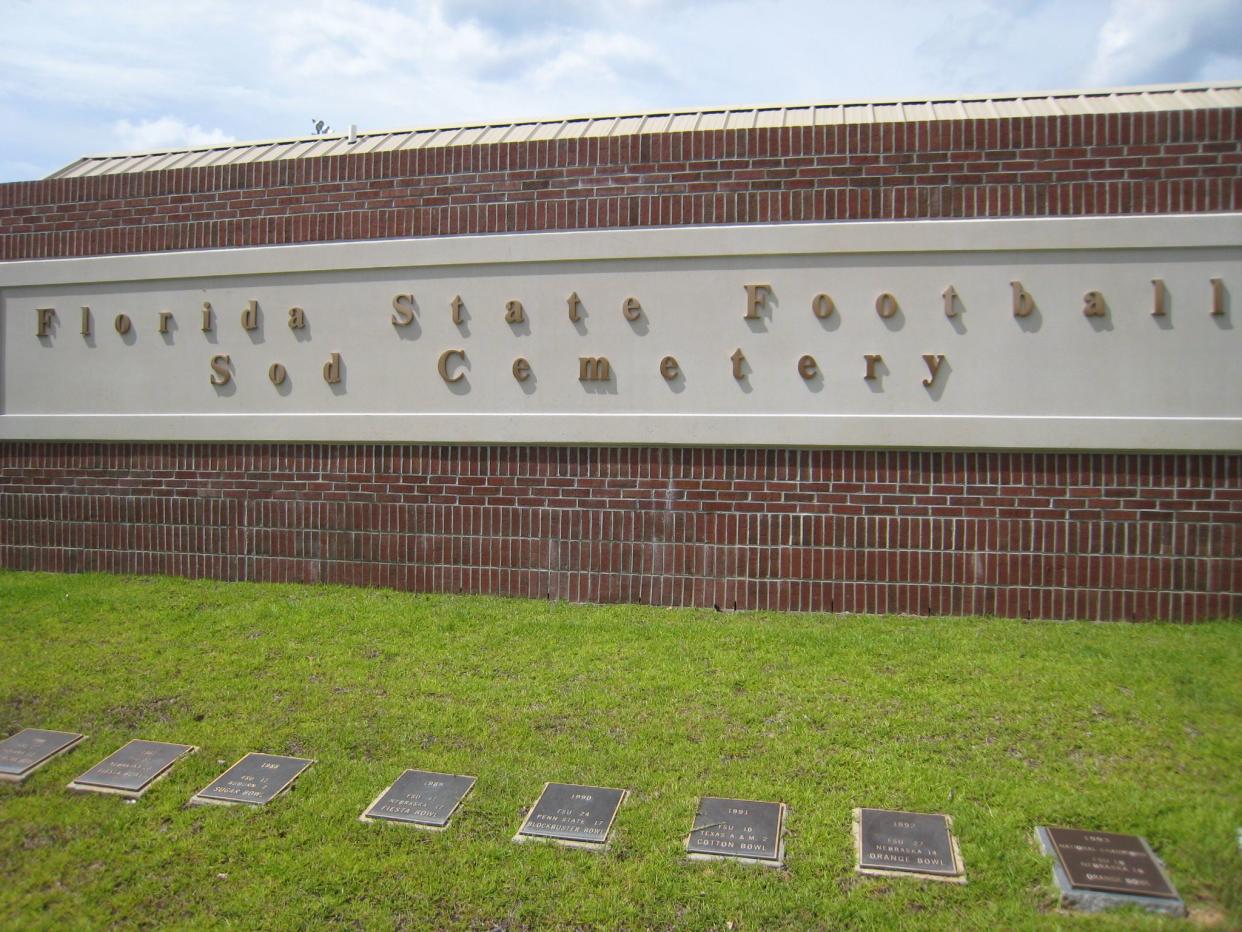
Sod Cemetery
For the Florida State Seminoles, it’s not enough to merely win a game and relish in the victory — it’s got to be memorialized … literally. For 60 years, the team has grabbed a piece of sod from the field of every bowl game or road win and brought it back to Tallahassee to literally bury and mark inside the team’s practice field, which presently holds more than 100 chunks of turf from other fields in its “sod cemetery.”

Sod Cemetery
For the Florida State Seminoles, it’s not enough to merely win a game and relish in the victory — it’s got to be memorialized … literally. For 60 years, the team has grabbed a piece of sod from the field of every bowl game or road win and brought it back to Tallahassee to literally bury and mark inside the team’s practice field, which presently holds more than 100 chunks of turf from other fields in its “sod cemetery.”
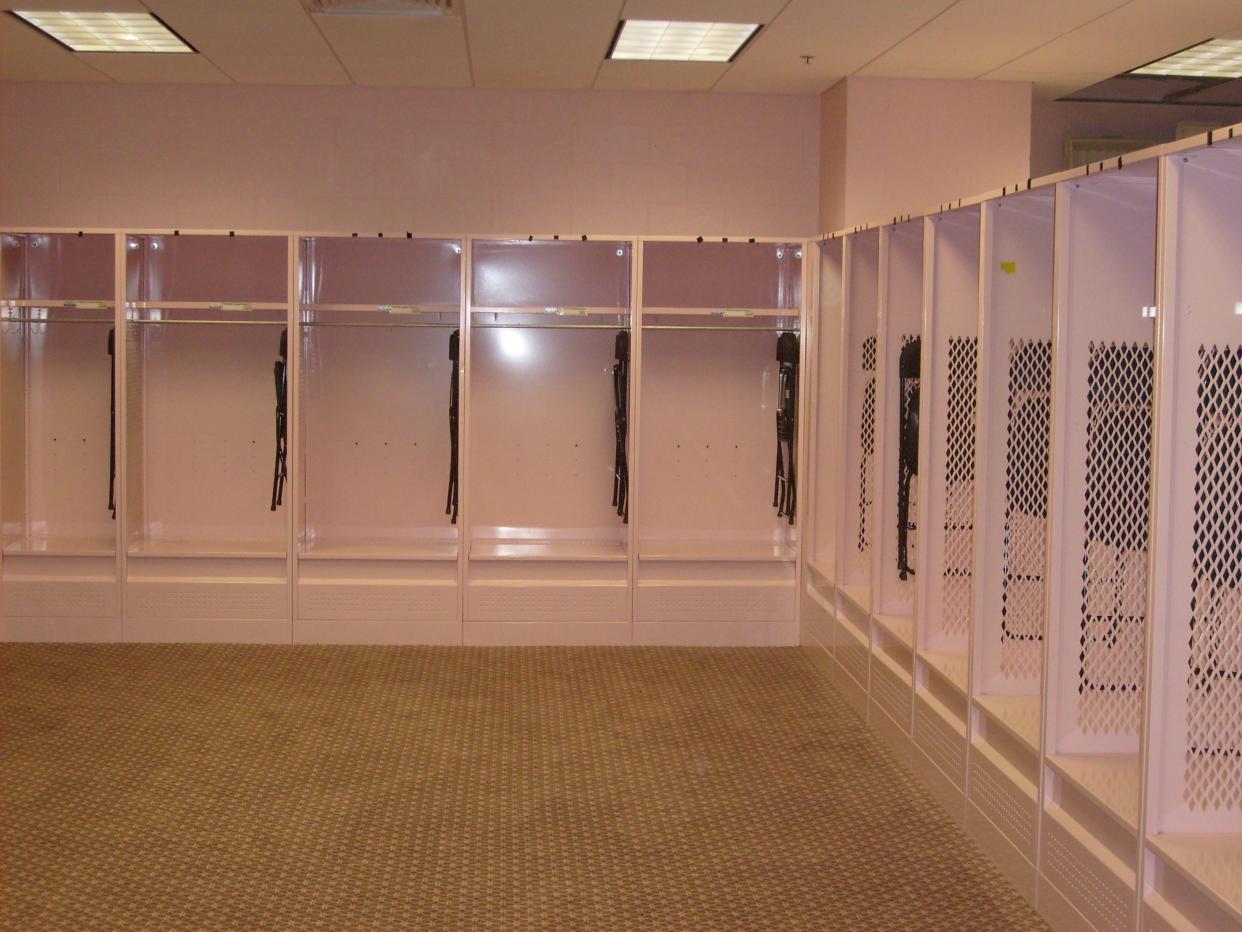
The Pink Locker Room
Getting in the opponents’ heads is part of college football — intimidation can go a long way in snatching a victory and out-performing the other team. Coaches will plan plays to intentionally throw the other teams’ psyches off, but the University of Iowa takes head games all the way to the locker room. To annoy their opponents, the visiting team’s locker room is painted pink from floor to ceiling.
Related: World-Famous Stadiums Where You Can Still Catch a Game

The Pink Locker Room
Getting in the opponents’ heads is part of college football — intimidation can go a long way in snatching a victory and out-performing the other team. Coaches will plan plays to intentionally throw the other teams’ psyches off, but the University of Iowa takes head games all the way to the locker room. To annoy their opponents, the visiting team’s locker room is painted pink from floor to ceiling.
Related: World-Famous Stadiums Where You Can Still Catch a Game
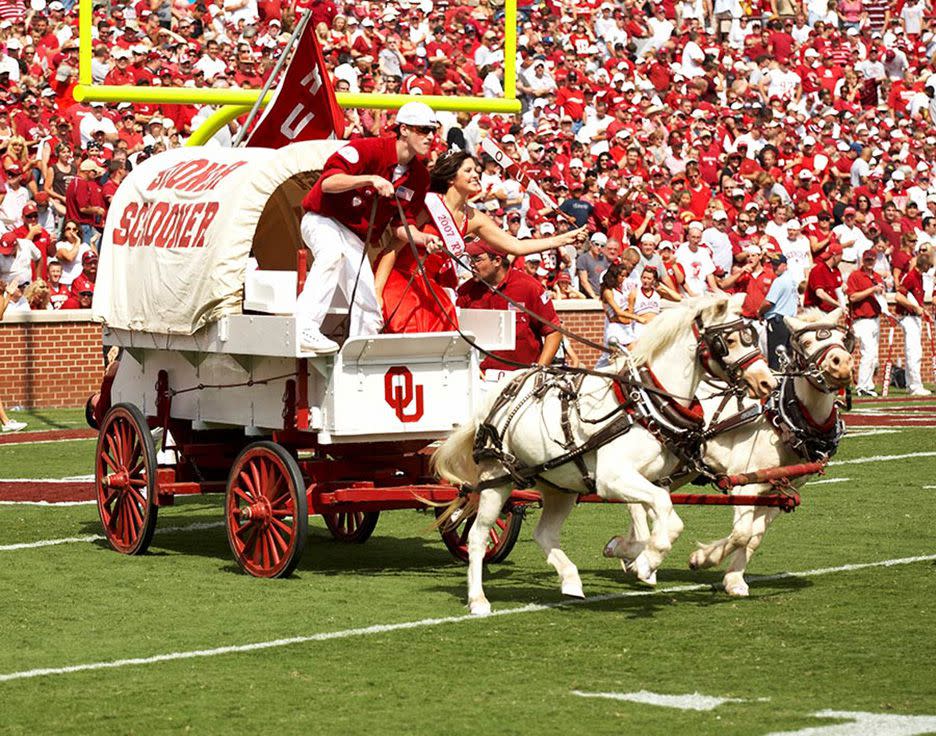
Sooner Schooner
Although it might look like it’s straight off the Oregon Trail, the Sooner Schooner is actually the University of Oklahoma’s official mascot. The wagon is pulled by two white horses named Sooner and Boomer, and in 2019, the iconic ride famously crashed on the field, destroying it. Alas, a new Sooner Schooner was unveiled in 2020, and it is so legendary and beloved that even Eli Manning has ridden on it.

Sooner Schooner
Although it might look like it’s straight off the Oregon Trail, the Sooner Schooner is actually the University of Oklahoma’s official mascot. The wagon is pulled by two white horses named Sooner and Boomer, and in 2019, the iconic ride famously crashed on the field, destroying it. Alas, a new Sooner Schooner was unveiled in 2020, and it is so legendary and beloved that even Eli Manning has ridden on it.
